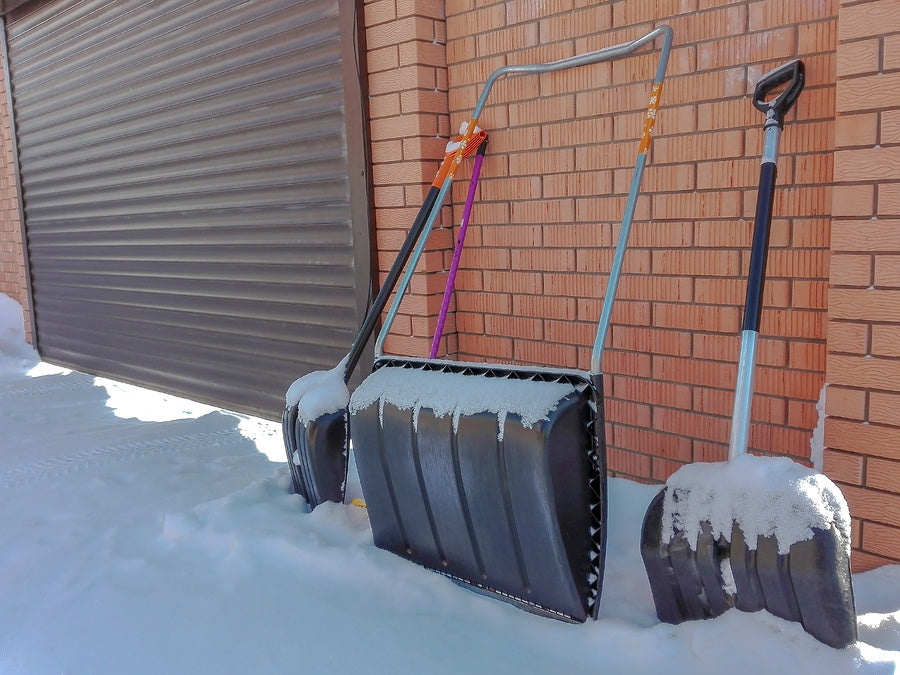 Many factors can affect your facility's snow removal efforts, including:
Many factors can affect your facility's snow removal efforts, including:
- The size and experience of your snow-removal crew
- The detail and advance planning you put into your winter-storm response plan
- The amount of time and money you've invested in safety training and adequate insurance
However, if you don't have the proper equipment and snow/ice melting agents on-hand and ready to use, your snow removal efforts will be hampered.
Given the diversity of weather challenges you are likely to encounter at your facility in a typical winter season, it’s best to maintain a diverse stockpile of snow-removal tools that stand ready for immediate use.
The importance of diverse snow removal equipment
To maintain constant building accessibility or to recover full accessibility as quickly as possible following a snowstorm, it’s critical that you clear off parking lots, entry/exit lanes, fire lanes, loading docks, sidewalks, walkways, outdoor stairways, building entry areas and, occasionally, roof tops.
To do these jobs effectively takes plows—both straight and V-type—blowers/throwers of various sizes, high-quality shovels and scrapers, long-necked roof rakes, snow pushers and wheel loaders to relocate snow on-site, and snow hauling trucks to move it off-site when piles grow too high or storage space fills up.
By investing in diverse snow-removal equipment, you will reap a number of benefits, including:
- Maintenance of a clear path to/from the facility (with minimal downtime) to keep your business running smoothly all season long
- Maintenance of high safety standards that are OSHA compliant, minimizing the chances of accidents and lawsuits, and keeping buildings accessible for the disabled
- The ability to accomplish more with a smaller crew due to the deployment of powerful, well-maintained equipment that is ideally suited for each task to be tackled
- Less inadvertent property damage in the course of clearing off snow/ice and thus lower landscaping expenses in the spring
The importance of diverse snow melting methods
Besides keeping an array of appropriate machinery on hand that can handle any snowstorm, you also will need a variety of snow and ice melting agents. You might also consider installing an in-pavement snow-melt system (either electric of hydronic) in key locations, such as executive/handicap parking spots and high-traffic walkways, although these systems necessitate the tearing up of pavements in order to install them. Alternatively, you can lay down on-pavement snow-melting mats that do the same job but avoid this necessity.
As for those pavements where you will be using a chemical snow-melting agent, you need to be ready to de- or anti-ice these surfaces. The former involves granules and is used after the snow has fallen, while the former is a liquid brine that is ideal for preventing ice formation and keeping snow from adhering to pavements in order to make later removal quick and easy. Popular anti-icers include liquid potassium acetate and calcium-magnesium acetate.
When de-icers are used, you will need options based on outdoor temperature and other factors. Rock salt, for example, is the cheapest de-icer but only works well down to 23°F. Also, rock-salt shortages are a frequent occurrence, which make it wise to stockpile other de-icers. For extremely cold weather down to -26º F, calcium chloride is a prime choice. And calcium chloride does less damage to plant life, making it a better applicant on pavements adjacent to plants and turf.
The bottom line is that you will save money, lower or eliminate downtime, and keep your facility safer when you use a wide diversity of snow/ice removers specifically chosen for each weather event and for each area of your facility grounds.


